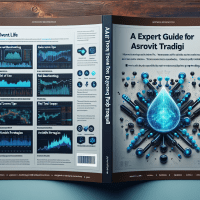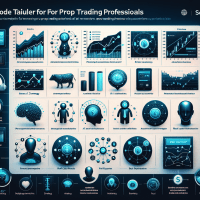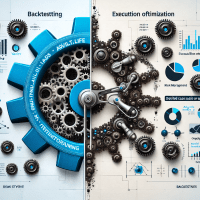Solvent.Life vs Vantir: AI Strategy vs Feedback Models
In the evolving world of prop trading, leveraging advanced AI strategies and effective feedback models is essential for achieving consistent profitability and managing risk. This article delves into a detailed comparison of Solvent.Life vs Vantir – AI strategy vs AI feedback models, providing actionable insights on backtesting methodologies, advanced data integration, and regulatory compliance. Whether you are a junior trader or a seasoned quant, the insights shared here are designed to optimize your trading workflow and elevate your prop trading strategies.
Advanced Backtesting Concepts in Prop Trading
Effective backtesting forms the backbone of any successful prop trading strategy. In this section, we explore common pitfalls such as overfitting, survivorship bias, and look-ahead bias, and offer practical techniques to mitigate these issues.
Identifying and Mitigating Backtesting Pitfalls
- Overfitting: Avoid excessive parameter tuning. Always validate models on out-of-sample data.
- Survivorship Bias: Utilize complete datasets that include delisted securities to better simulate real-market conditions.
- Look-ahead Bias: Ensure that only historical data available at the time is used in backtesting.
One proven method is implementing walk-forward optimization. Unlike traditional backtesting that fits data on a static period, walk-forward analysis continuously tests and updates parameters in a moving window. This ensures that strategies remain adaptive to evolving market conditions.
Integrating Automated Tools for Enhanced Backtesting
Renowned platforms such as TradingView and MetaTrader 5 support vectorized backtesting with robust commission and slippage handling. For advanced institutional strategies, QuantConnect and NinjaTrader offer APIs, extensive historical data, and automated parameter optimization features that streamline the backtesting process.
Figure 1: A snapshot of a backtesting report from TradingView, showcasing key metrics like drawdown and Sharpe ratios.
Comparing Solvent.Life and Vantir in Prop Trading
Both Solvent.Life and Vantir have carved niches in prop trading by leveraging AI-driven approaches. Their models differ significantly in strategy design and feedback mechanisms, offering traders unique advantages depending on their specific needs.
Solvent.Life: AI Strategy and Automation
Solvent.Life provides an AI trading platform that focuses on algorithmic strategy development and automated backtesting. Key features include:
- Backtesting Features: Utilizes vectorized backtesting with event-driven simulations, automated parameter optimization, and comprehensive stress testing to simulate diverse market conditions.
- Data Quality: Offers deep historical data across asset classes with real-time feeds to support live-trading environments and compliance needs.
- Integration Capabilities: Seamlessly integrates with broker APIs and other analytics platforms, making it suitable for both individual traders and firm-level deployment.
- Pricing Tiers: Competitive subscription models with free trials available for testing advanced features.
- Use Case Suitability: Particularly suited for prop firms aiming for scalable, team-based trading strategies, with built-in compliance tools in line with MiFID II and ESMA regulations.
Vantir: AI Feedback Models for Trading Refinement
Vantir takes a distinct approach by emphasizing the optimization of trading strategies using AI feedback loops. Its features include:
- Backtesting Features: Incorporates automated reporting generation, scenario analysis, and walk-forward optimization to fine-tune strategies in real-time.
- Data Reliability: Access to high-quality tick and bar data, with robust mechanisms to handle missing data and adjust for corporate actions.
- Integration Capabilities: IT infrastructure supports API access, broker connectivity, and compatibility with platforms like NinjaTrader and QuantConnect.
- Pricing & Use Cases: Offers tiered solutions that cater to both retail and institutional needs, ideal for firms focused on iterative strategy feedback and rapid adjustment.
Comparison Table: Key Features and Capabilities
| Feature | Solvent.Life | Vantir |
|---|---|---|
| Backtesting Engine | Vectorized, event-driven with stress testing | Walk-forward, scenario analysis, and automated reporting |
| Data Quality | Deep historical data, real-time feeds | High-quality tick and bar data with corporate adjustments |
| Integration | Broker APIs, compatibility with TradingView and MetaTrader 5 | API access, integration with NinjaTrader and QuantConnect |
| Pricing | Subscription-based, free trial available | Tiered solutions, retail to institutional packages |
| Use Cases | Prop firms and advanced individual traders | Firms focusing on iterative strategy refinement |
Implementing Automated Backtesting in Prop Trading
Integration of automated backtesting tools is crucial for improving strategy reliability. Let’s consider a brief example using Python and the Backtrader library:
import backtrader as bt
class TestStrategy(bt.Strategy):
def __init__(self):
self.sma = bt.indicators.SimpleMovingAverage(self.data.close, period=20)
def next(self):
if self.data.close[0] > self.sma[0]:
self.buy()
elif self.data.close[0] < self.sma[0]:
self.sell()
if __name__ == '__main__':
cerebro = bt.Cerebro()
cerebro.addstrategy(TestStrategy)
data = bt.feeds.YahooFinanceData(dataname='AAPL', fromdate=datetime(2020, 1, 1), todate=datetime(2021, 1, 1))
cerebro.adddata(data)
cerebro.run()
cerebro.plot()
This snippet demonstrates a simple moving average strategy where automated signals lead to trade execution. The code can be further enhanced by integrating risk management rules and live-market simulation.
Case Studies: Real-World Prop Trading Success
To understand the practical benefits of advanced AI trading models, consider the following anonymized case study:
Case Study: Enhancing Strategy Performance at a Prop Firm
A mid-sized prop firm faced challenges with overfitting in their trading algorithms. By adopting Solvent.Life's automated backtesting platform, they integrated rigorous stress testing and walk-forward optimization, leading to a 15% increase in their Sharpe ratio and a 25% reduction in maximum drawdown. In parallel, the adoption of Vantir's AI feedback models allowed for faster iteration cycles and clearer actionable insights across their trade desks. The dual approach not only enhanced compliance with MiFID II and ESMA regulations but also significantly reduced the turnaround time in strategy deployment.
Figure 2: A comprehensive risk management dashboard from MetaTrader 5, highlighting key metrics like drawdown, Sharpe ratio, and stress test results.
Risk Management and Regulatory Compliance in Prop Trading
Prop trading firms must rigorously manage risk while staying compliant with guidelines such as MiFID II, ESMA regulations, and NFA rules. Best practices include:
- Out-of-Sample Testing: Always allocate a portion of your data exclusively for testing live-market robustness.
- Real-Time Monitoring: Integrate live feeds with automated alerts to monitor key risk metrics like maximum drawdown and profit factors.
- Documentation and Reporting: Ensure your backtesting results are well documented and auditable, aiding in regulatory compliance and internal reviews.
Pro Tips and Industry Insights
Next Steps for Aspiring Prop Traders
For further improvement, we suggest exploring our in-depth Advanced Prop Trading Strategies and detailed Risk Management Checklist. These resources provide granular insights into refining your approach to automated backtesting and risk control.
Conclusion
As of







